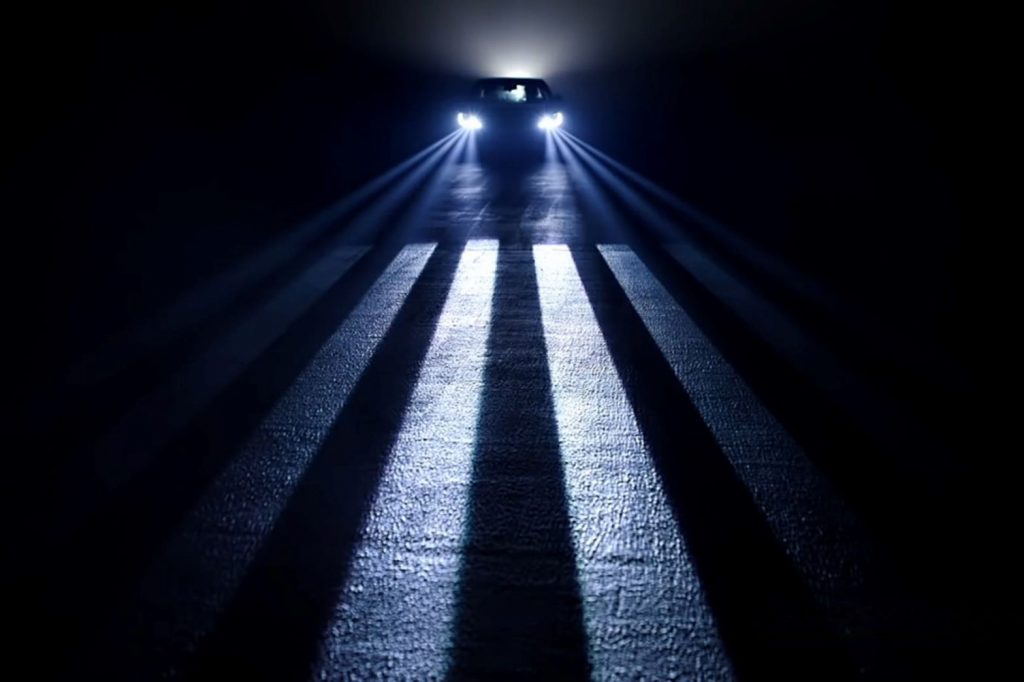
Hyundai Mobis executives believe that, in the era of autonomous driving, software technology capable of integrating numerous auto components into a single device will be more important than ever. One example of this is the HD Lighting System its engineers have developed to significantly reduce nighttime car accidents for both drivers and pedestrians.
The advanced driver assistance system (ADAS) visualizes road signs in text or shapes and projects them on the road surface. For example, it can project for a driver road construction ahead using relevant symbols and crosswalks to help pedestrians cross the road safely.
It is comprised of HD micro-LEDs for light sources and a digital micro-mirror device (DMD), a collection of tiny mirrors that act as the reflector. The key technologies are the control hardware and software logic that uses information from the front camera sensor and GPS navigation.
The 25,000 micro-LEDs are thinner than a human hair at just 0.04 mm (0.002 in) wide, so 250 times as many LEDs as the 80-120 LEDs installed in typical LED headlamps currently being mass-produced. This enables the lamp to control light more sensitively, helping to locate objects and pedestrians much more accurately.

The ultra-precise DMD controller reflects light using micro-mirrors measuring just 0.01 mm (0.0004 in). Light emitted from densely packed LEDs is reflected using 1.3 million digital mirrors to project the desired shapes and symbols on road surfaces.
One important feature of the system is that data are fed by the camera sensor and GPS navigation in real time. This comes in handy when, for example, a vehicle approaches a construction zone; it can display an “Under Construction” virtual symbol that is 1.5 m (4.9 ft) tall at 15 m (49 ft) ahead and inform the driver of a reduced speed limit.
The technology is specialized to increase visibility and prevent accidents at night so drivers can easily recognize when the car approaches a speed bump and where highway entries and exits are while looking ahead.
The system can proactively prevent pedestrian accidents. The camera sensor can recognize pedestrians, for instance while driving by a remote alley, and shows a virtual crosswalk on the road when the car stops. The “communication lighting” technology can not only use headlamps to communicate with pedestrians but also emergency lights and the horn.

